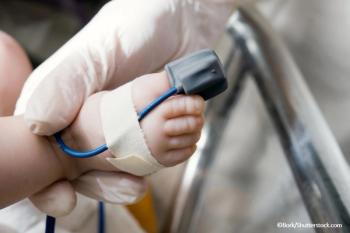
Flu Viruses Hitch Rides on Jetliners
BOSTON -- The sharp drop in air travel after the 9/11 attacks in 2001 slowed the spread of the 2001-2002 seasonal flu and delayed its peak by almost two weeks, according to researchers here. The finding showed that air travel contributes to influenza's spread.
BOSTON, Sept. 12 -- The sharp drop in air travel after the 9/11 attacks in 2001 slowed the spread of the 2001-2002 seasonal flu and delayed its peak by almost two weeks, according to researchers here.
The finding shows for the first time that air travel contributes to the spread of influenza, according to John Brownstein, Ph.D., of Children's Hospital Boston and Harvard Medical School.
"The post-September 11th flight ban was a natural experiment on the effect of flight restrictions on disease spread," Dr. Brownstein and colleagues reported in the online journal PLoS Medicine. "For the first time we've been able to show, using real data, that air travel spreads the flu."
The finding, based on a detailed mathematical analysis of travel and flu patterns, also suggested that travel restrictions might be a way to help control the spread of a future influenza pandemic, said Dr. Brownstein and colleagues.
During the five flu seasons before the 9/11 events, data from the World Health Organization and the CDC showed a remarkable consistency: Flu mortality peaked within two days of Feb. 17, and the disease took on average 33 days to spread across the country.
But in the 2001-2002 flu season, the mortality peaked March 2 -- 13 days later -- and the disease took 53 days to spread across the nation, an increase of 68% above the average.
Since then, the mortality peak has moved back toward Feb. 17, occurring on Feb. 29 in 2002-2003, Feb. 19 in 2003-2004, and Feb. 17 in 2004-2005, the researchers found.
By contrast, Dr. Brownstein and colleagues found, there was no change in the usual flu cycle in France, where no flight restrictions were imposed after Sept. 11, 2001.
"When we first looked at our data, we noticed that the 2001-2002 flu season was highly aberrant," said Kenneth Mandl, M.D., a co-author, also of Harvard and Children's. "At first we thought it was a problem with the data, but then we realized we were seeing the shadow of September 11th cast upon the influenza season."
The study also found two other interesting patterns, the researchers said:
Domestic air travel in November is an especially strong predictor of flu spread (r2=0.60; P=0.014). Aside from 2001-2002, the researchers said, the clearest example is the 1997-1998 season, which had both the lowest airline volume at 39 million passengers and the slowest spread of influenza at 26 days.
The finding suggests that "Thanksgiving is when new flu strains often spread across the country," Dr. Brownstein said.
Also, international air travel in September emerged as a key predictor of the flu mortality peak (r2=0.59; P=0.016). This was especially clear in 2001-2002, the researchers said, when international flight volume decreased by 27% -- from 4.9 million passengers to 3.5 million -- and the peak of influenza mortality was delayed by two weeks.
"Although the mechanisms driving the seasonality of influenza epidemics are still not well understood," Dr. Brownstein and colleagues concluded, "our findings do suggest that fluctuations in airline travel have an impact on large-scale spread of influenza."
Newsletter
Enhance your clinical practice with the Patient Care newsletter, offering the latest evidence-based guidelines, diagnostic insights, and treatment strategies for primary care physicians.

















































































































































































































































































